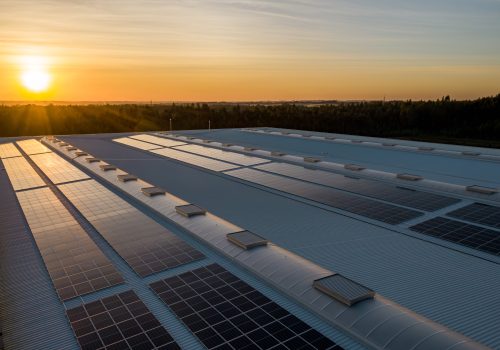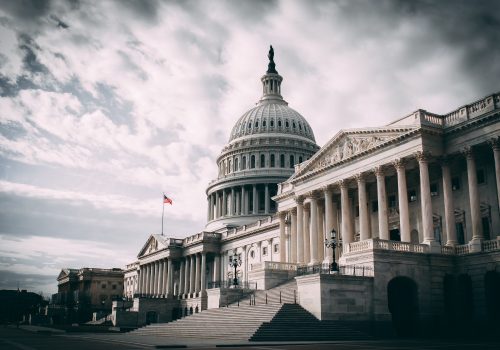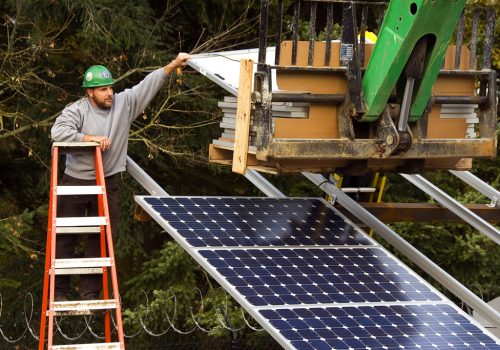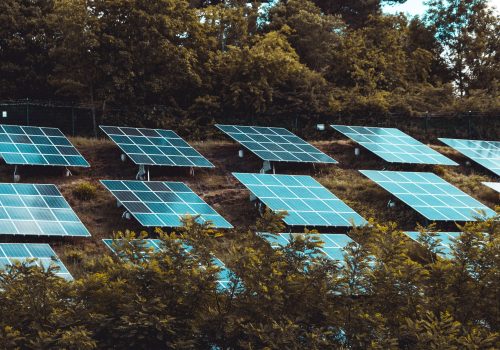The US economy has long been a global leader in innovation, thanks to the vitality of its research and development (R&D) enterprise. The US R&D ecosystem has been on the forefront of bringing pioneering technologies to commercial maturity with resounding benefits felt domestically and around the world. Many transformative energy technologies—ranging from civil nuclear reactors to solar photovoltaic power and seismic monitoring—have been given life in US national laboratories.
As a global race to deploy clean energy accelerates, the impetus to be at the forefront of innovation could never be greater. Technological competition with systemic rivals such as China now permeates the global climate fight, making the urgency to deploy net-zero solutions a matter of economic leadership and not environmental merit alone. The US R&D enterprise remains robust, but it must expand to meet the historic moment.
The Inflation Reduction Act (IRA), intends to stake a claim for US leadership in decarbonization. As such, it provides much needed funding for key clean energy research programs. However, amid a deluge of government incentives, ranging from grants to tax credits, it is instructive to compare the scale of this funding by historical comparison.
In fact, US R&D spending has still not reached parity with historical levels.
In 1978, the US Department of Energy (DOE)’s research, development, demonstration, and deployment spending accounted for two percent of total non-defense discretionary spending in the federal budget. As a share of the US Gross Domestic Product (GDP), federal R&D spending peaked in 1965, at 2.25 percent of GDP, and remained above one percent through the mid-1990s. However, this level has been consistently declining.
From 1982 to 2022, R&D spending was roughly half of the levels seen in 1978, the year in which the Belfer Center for Science and International Affairs begins to track DOE appropriations.
In the 1970s, when R&D spending was elevated, many of the technologies we take for granted today were developed in national labs. Although not deployed with commercial success for decades afterward, the drilling technologies which enabled hydraulic fracturing were pioneered in the DOE’s Eastern Gas Shales project, begun in 1976. This innovation was invigorated by the development of microseismic imaging by Sandia National Laboratory in an unrelated effort.
Between 1973 and 1988, the US government spent $380 million on wind turbine development, eclipsing the investments of Denmark and Germany combined during that period. Technological improvements originating in US national labs, however, ultimately enabled those nations to bring wind power to scale in their markets.
Amalgamating research funding from the IRA, its cognate CHIPS and Science Act, and their 2021 predecessor the Infrastructure Investment and Jobs Act, the Biden administration’s proposed 2024 budget allocates $11 billion for clean energy R&D to the DOE and calls for an 18 percent rise in total R&D spending from 2023 levels. This would put real R&D spending on par with levels not seen since at least the 1970s. However, the 2023 levels of federal R&D funding still account for only 0.76 percent of US GDP, far below previous levels.
R&D funding is one of the clearest cases where public investment delivers substantial returns to the taxpayer and the broader economy. Independent reports commissioned by the DOE’s Office of Energy Efficiency and Renewable Energy (EERE) found that taxpayer-funded investments of $12 billion made by the office have yielded more than $388 billion in total undiscounted net economic benefits to the United States. On an annual basis alone, returns on R&D investments stand at an astonishing 27 percent.
A report by the Information Technology and Innovation Foundation, a public policy organization, argues for increasing public funding for energy R&D to $25 billion. Using the EERE’s undiscounted benefit-to-cost ratio, this would yield $825 billion in net economic benefits for the United States.
Reaching this level would require political support and a clear articulation of the net benefits to the nation, while its implementation would require a calculated and progressive approach. However, there is no better time to begin than the present moment, as the United States’ flagship climate legislation positions it to be a first mover across a suite of decarbonized technologies.
Domestic policy is foreign policy
Equally as evident as the domestic benefits of R&D spending are the international ramifications. The US R&D enterprise articulates our value as a nation in creating the technologies to improve qualities of life globally.
For the United States to lead, it must not allow itself to be overtaken on this front.
China increased its R&D spending from 1 percent to 2.4 percent of GDP between 2000 to 2020, nearly closing the gap with the United States’ real R&D public and private expenditures.
Technological competition cannot be restricted to export controls and ‘friendshoring’ supply chains. It must include deliberate efforts to develop and deploy next-generation clean energy technologies. To date, this remains an area where the United States has lost an edge to its competitors, particularly in critical sectors such as advanced batteries, nuclear fuel cycle technologies, semiconductor materials, and solar manufacturing systems, among others. For the IRA to achieve its US climate leadership objectives, R&D investments on an historic scale are required.
William Tobin is an assistant director at the Atlantic Council Global Energy Center
Meet the author
Related content
Learn more about the Global Energy Center

The Global Energy Center develops and promotes pragmatic and nonpartisan policy solutions designed to advance global energy security, enhance economic opportunity, and accelerate pathways to net-zero emissions.
Image: Man holding an incandescent bulb. Courtesy of Riccardo Annandale, https://unsplash.com/photos/7e2pe9wjL9M






